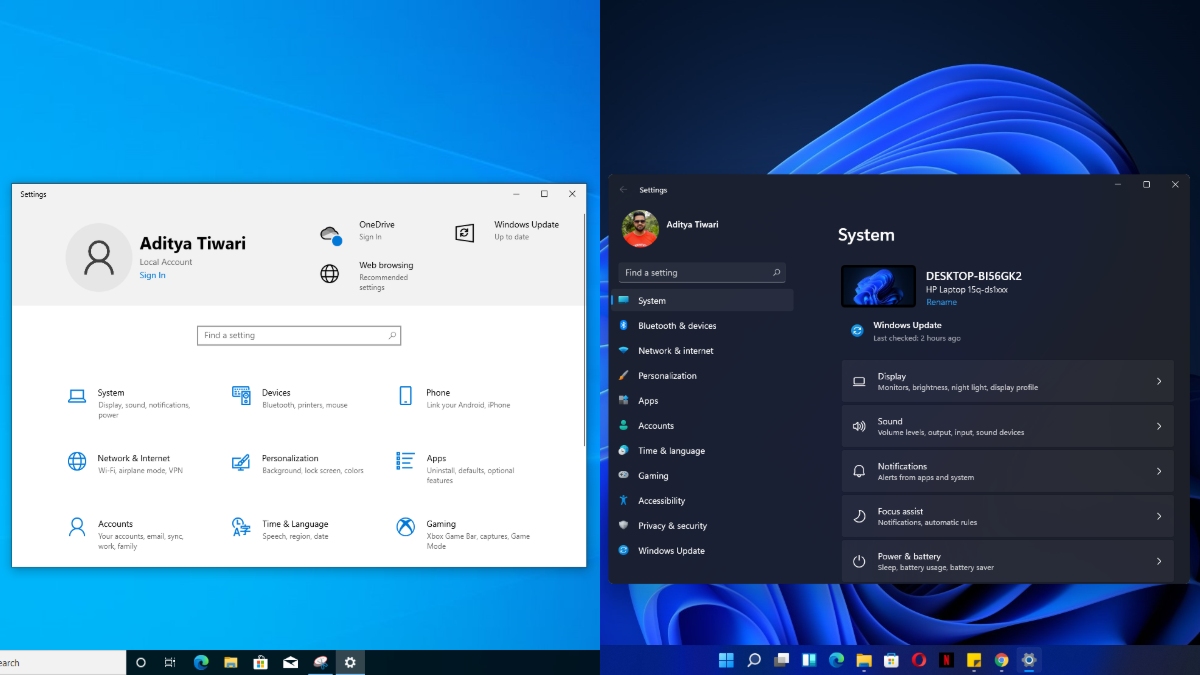
This will automatically open the RDC\RDP client app to initiate connection to your VM with the file's settings applied. The next time that you connect to the lab VM, you should browse to the location of the RDC\RDP file that you saved in the previous step and click on it to open the file. After you’ve made changes, you can test the settings by clicking the Connect button.ĥ. Once you have finalized the settings, you can save the changes to the RDC\RDP file by clicking the Save button. Now that the RDC\RDP file is open, you can make changes to the Display and Experience settings. Note: You may need to first click the Show Options button to see the Open button.Ĥ. When the RDP\RDC client app opens, click the Open button and browse to the location where you saved your RDP\RDC file.
#Win 10 how to change app settings windows
For example, if you are connecting from a Windows device, type RDP in the search bar to open the RDP\RDC client app.ģ. Instead of clicking on the RDP\RDC file to open it, you first need to open the RDP\RDC client app. As shown in the instructions for connecting to a VM, save the RDP\RDC file to local device.Ģ. Here are the steps that users should follow to change their connection settings in their RDP\RDC file:ġ. To change the connection settings in the RDP\RDC file, the user will need to open the file using the RDP\RDC client app and then save changes to the file before they use it to connect to their lab VM. In this section, we’ll show the steps that users can follow to save changes to the RDP\RDC file that is used to connect to their lab VM.

Again, with the example of Linux Ubuntu with GNOME, we recommend reducing this setting to Modem (56 kbps).Īs we mentioned above, when a user notices slow performance with their VM connection, we recommend that they experiment with different values for the Display and Experience settings to potentially improve performance. The Experience settings include a Performance option that allows you to choose your connection speed to optimize performance. Continuing with our example of Linux Ubuntu and GNOME, we recommend changing this setting to High Color (15 bit): Reducing the color depth may help to improve VM connection performance. The Display settings include a Colors option that allows you to choose the color depth of the remote session. If you have users reporting slow connection experiences, we recommend that they experiment with changing the RDC\RDP client app’s Display and Experience settings. For example, there are known performance issues when you use the RDC\RDP client app to connect to a Linux Ubuntu VM that has the GNOME graphical desktop installed. Once reason that a connection may be slow, is that it can be impacted by the type and version of the operating system being used.

In this blog post, we’ll show how users can change the RDC\RDP client app settings to potentially improve their connection experience.Ĭhanging the display and experience settings However, there are cases where a user’s RDC\RDP connection to a lab VM may still feel slow which can happen for many different reasons. By default, the user’s network connection is detected automatically so that the right experience is selected. These settings don’t usually need to be changed. The RDC\RDP client app has various settings that a user can adjust to optimize their connection experience. In our previous blog post about how to ensure the best RDP experience for lab users, we talked about the Microsoft Remote Desktop Connection (RDC\RDP) client app’s settings.


 0 kommentar(er)
0 kommentar(er)
